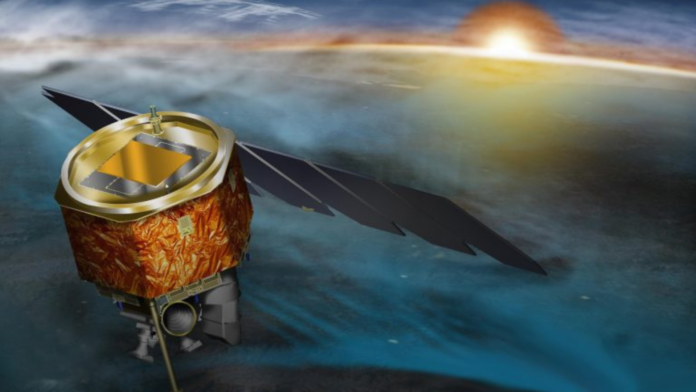NASA has announced it’s ending operational support for a spacecraft that was researching the formation of clouds on the edge of space for the past 15 years.
In a short blog post(Opens in a new window), NASA said that the Aeronomy of Ice in the Mesophere, or AIM, had completely lost battery power. Despite its batteries starting to decline back in 2019, the spacecraft was still able to send back a “significant amount of data.” However, after a further decline in battery power, the AIM is now unable to either receive commands or collect data.
After launching in 2007, AIM studied the formation of polar mesospheric clouds, which sit over the North and South poles and are also known as night-shining clouds as they only can be seen near twilight. It did this while orbiting 312 miles above Earth.
As Gizmodo reports(Opens in a new window), NASA can’t change the battery on AIM which explains its support for the spacecraft ceasing. The spacecraft has been orbiting Earth in a near-circular, Sun-synchronous orbit which means it’s been passing over any given point of the planet’s surface.
The modest-sized spacecraft was hugely important in helping scientists better understand how clouds are formed, and, as NASA notes in its blog, it led to a whopping 379 peer-reviewed scientific papers. NASA had originally intended for AIM to operate for two years, from 2007 until 2009, but its operations were repeatedly extended because of its significant scientific contributions.
NASA said the AIM team would continue to check AIM’s communication for two weeks “in case the spacecraft is able to reboot and transmit a signal.”
Recommended by Our Editors
Last week, NASA unveiled the spacesuit that will be worn by astronauts arriving on the Moon in 2025. The all-white spacesuit is designed for ease of mobility and offer protection against the harsh conditions and hazards on the Moon.
Meanwhile, over in the UK Rolls-Royce will receive £2.9 million (around $3.5 million) from the British Government to fund its research into nuclear power that could be used for lunar bases.
Get Our Best Stories!
Sign up for What’s New Now to get our top stories delivered to your inbox every morning.
This newsletter may contain advertising, deals, or affiliate links. Subscribing to a newsletter indicates your consent to our Terms of Use and Privacy Policy. You may unsubscribe from the newsletters at any time.
Hits: 0















